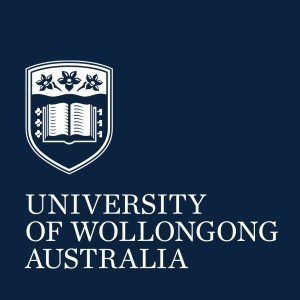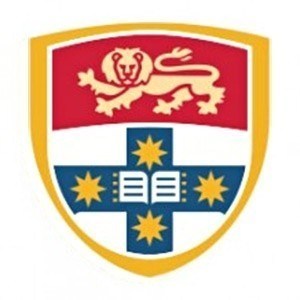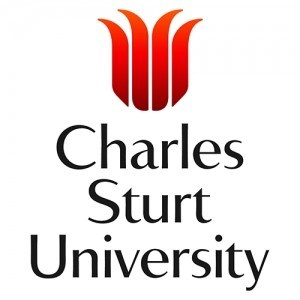Photos of university / #uow
The Bachelor of Medical Radiation Physics at the University of Wollongong is a comprehensive undergraduate program designed to prepare students for a dynamic career in the healthcare and medical imaging industries. This degree offers an in-depth understanding of the physical principles and techniques used in medical imaging, radiotherapy, and nuclear medicine, equipping graduates with the necessary skills to support diagnosis and treatment of various medical conditions. Throughout the course, students explore topics such as radiation physics, medical imaging technologies, radiation safety, and health physics, gaining both theoretical knowledge and practical experience. The program emphasizes the application of physics in medical settings, fostering skills in instrumentation, data analysis, and problem-solving. It also incorporates hands-on training through laboratory work and clinical placements, allowing students to develop their competencies in real-world environments. Graduates of this program are well-prepared for careers in a range of settings, including hospitals, clinics, research institutions, and government agencies, where they may work as medical radiation physicists, radiation safety officers, or in diagnostic imaging departments. The curriculum is designed to meet professional accreditation standards, ensuring graduates are recognized for their expertise and readiness to contribute to patient care. Additionally, the program promotes lifelong learning and ongoing professional development to keep pace with advancements in medical technology and radiological sciences. With a focus on innovation and evidence-based practice, the Bachelor of Medical Radiation Physics at the University of Wollongong aims to produce competent, ethical, and adaptable professionals dedicated to improving healthcare outcomes through specialized knowledge of medical radiation sciences.
Licensed by the Australasian College of Physical Scientists and Engineers in Medicine (ACPSEM).
Program requirements for the Bachelor of Science in Medical Radiation Physics at the University of Wollongong include completing a total of 144 credit points over the duration of the degree. Prospective students are typically required to have a completed Australian Tertiary Admission Rank (ATAR) or an equivalent qualification that demonstrates suitable academic achievement. For entry into the program, applicants generally need to meet the Queensland Certificate of Education or an equivalent high school qualification with a strong emphasis on physics and mathematics subjects, as these form the foundation of the program. International applicants are often evaluated based on their academic records, and English language proficiency requirements must be satisfied through tests such as IELTS or TOEFL, with specific minimum scores determined by the university’s admission policies.
The curriculum encompasses core courses in physics, mathematics, health sciences, and specialized subjects related to medical imaging and radiation therapy. Students are also required to undertake practical components and clinical placements, which provide hands-on experience in hospital or clinical settings. These placements are integral to the program, ensuring that students gain real-world skills and understanding of radiation safety, imaging techniques, and biomedical applications. Additionally, there are designated elective units that allow students to tailor parts of their studies toward areas of particular interest within medical radiation physics.
To graduate, students must achieve at least a Credit average across all core and elective courses and complete a capstone project or equivalent research activity. The program is designed to meet accreditation standards set by relevant professional bodies, preparing graduates for registration as medical radiation practitioners. Continuous assessment through coursework assignments, laboratory reports, examinations, and practical evaluations is part of the academic requirements. Students are advised to consult the official university admission criteria and program handbook for comprehensive and updated information regarding prerequisites and specific entry requirements, as these may vary depending on the applicant’s nationality and educational background.
The University of Wollongong offers various financial assistance options for students enrolled in the Medical Radiation Physics program. Prospective students should explore the Scholarships and Grants available through the university's dedicated financial aid office, which encompass merit-based scholarships, equity scholarships, and country-specific grants aimed at supporting students from diverse backgrounds. The university also provides information about government-funded loans and sponsorship opportunities, including the Australian Government's Commonwealth supported places and higher education loan programs, which can substantially reduce upfront tuition costs. International students may be eligible for scholarships specifically designed to promote global diversity within the program, along with external funding options from private organizations and health sector bodies. The program's tuition fees are published annually and include detailed cost breakdowns, which can be paid via various flexible payment plans, including installment options and direct billing arrangements. Students are encouraged to contact the university's financial services team early in their enrollment process to discuss available support measures, plan their budgets, and understand the requirements for maintaining eligibility for financial aid. Additionally, the university provides financial counseling services to help students manage their educational expenses effectively. For research students, there may be opportunities to secure research grants or be employed as research assistants, providing both financial support and valuable professional experience. Overall, the University of Wollongong is committed to making higher education accessible, and the financial support system is designed to accommodate students' diverse financial circumstances, ensuring that capable learners can pursue their careers in Medical Radiation Physics without undue financial hardship.
The Bachelor of Medical Radiation Physics at the University of Wollongong is a comprehensive undergraduate program designed to prepare students for a career in the field of medical imaging and radiation therapy. The program integrates a strong foundation in physics, biology, and healthcare sciences to equip graduates with the essential knowledge and skills required to operate and support advanced medical radiation equipment used in hospitals and clinics. Students enrolled in this degree will undertake a series of core courses that cover topics such as radiation physics, medical imaging techniques, radiation therapy principles, health physics, and radiation safety. The curriculum emphasizes both theoretical understanding and practical skills, ensuring that graduates are job-ready with hands-on experience gained through laboratory sessions, industry placements, and simulation exercises.
Throughout the program, students are introduced to cutting-edge technologies such as computed tomography (CT), magnetic resonance imaging (MRI), nuclear medicine, and radiotherapy planning systems. The coursework is complemented by training in radiation protection and safety protocols aligned with national and international standards. The program is designed to foster critical thinking, problem-solving, and professional communication skills that are vital in medical settings. This prepares students not only to operate sophisticated equipment but also to collaborate effectively with multidisciplinary healthcare teams.
The University of Wollongong places a strong emphasis on practical learning, with partnerships established with hospitals and medical facilities to provide students with real-world experience. Students participate in clinical placements that give firsthand exposure to patient care environments, enabling them to understand the ethical, legal, and social aspects of medical radiation physics. The program also offers research opportunities and engagement with industry projects, which can be beneficial for those interested in pursuing postgraduate studies or careers in medical physics research.
Graduates of the Bachelor of Medical Radiation Physics program are well-positioned to work as medical radiation scientists, radiologic technologists, or medical physicists in hospitals, clinics, and research institutions. They may also find opportunities in healthcare technology companies or regulatory agencies involved in radiation safety standards. The degree is accredited by relevant professional bodies, ensuring that graduates meet the standards required for registration and employment within the healthcare sector. Overall, the program aims to produce highly competent and ethically responsible professionals capable of advancing medical imaging and radiation treatment practices to improve patient outcomes.






